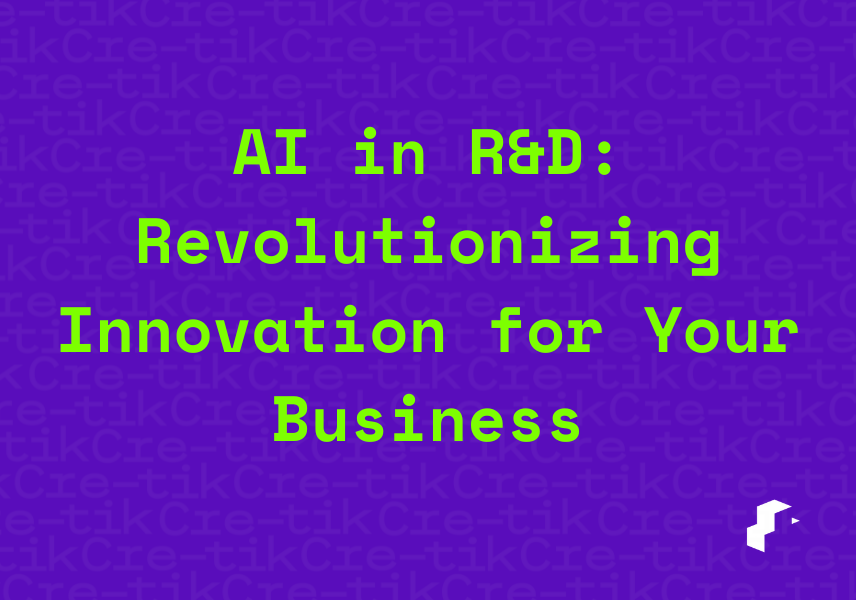In the world of technology, fostering creativity is the key to success, helping you become a leader and a standout achiever.

Introduction
Artificial intelligence (AI) is no longer a futuristic concept; it's a powerful tool transforming research and development (R&D) across industries. By leveraging AI, businesses can accelerate innovation, optimize processes, and gain a significant competitive edge. This blog post explores how you can effectively integrate AI into your R&D efforts.
1. Accelerating Discovery and Hypothesis Testing
Trend: AI can analyze vast datasets to identify patterns and generate hypotheses that humans might miss.
How to Use It:
Use machine learning algorithms to analyze scientific literature, patents, and research data.
Employ AI-powered simulations to test hypotheses and predict outcomes.
Utilize AI for drug discovery, materials science, and other areas where data analysis is crucial.
2. Optimizing Experimentation and Design
Trend: AI can optimize experimental designs and predict the results of different configurations.
How to Use It:
Use AI to optimize the design of experiments, reducing the number of iterations required.
Employ AI-powered tools for computer-aided design (CAD) and simulation.
Leverage AI for process optimization and quality control.
3. Data Analysis and Insight Generation
Trend: AI excels at processing and analyzing large datasets, extracting valuable insights that can inform R&D decisions.
How to Use It:
Use AI for data mining and pattern recognition.
Employ AI-powered analytics to identify trends and anomalies in research data.
Leverage AI for predictive modeling and forecasting.
4. Automation of Repetitive Tasks
Trend: AI can automate repetitive tasks, freeing up researchers to focus on more creative and strategic work.
How to Use It:
Automate data entry and processing.
Use AI for image analysis and data labeling.
Employ AI-powered robots for laboratory automation.
5. Personalized R&D
Trend: AI can personalize R&D efforts by tailoring approaches to specific projects and goals.
How to Use It:
Use AI to personalize research recommendations and information retrieval.
Employ AI-powered tools for collaborative research and knowledge sharing.
Use AI to help researchers stay on top of the most current research.
6. Enhancing Collaboration
Trend: AI can facilitate collaboration by providing shared platforms and tools for researchers.
How to Use It:
Use AI-powered platforms for collaborative data analysis and visualization.
Employ AI-powered tools for knowledge management and information sharing.
Use AI to help translate documents between languages, to promote international collaboration.
Challenges and Considerations
Data Quality and Availability: Ensure that your data is accurate and accessible.
Ethical Considerations: Address potential ethical implications of AI in R&D.
Talent Acquisition: Invest in training and hiring AI experts.
Conclusion
Integrating AI into your R&D efforts can unlock new possibilities for innovation and accelerate your business growth. By embracing AI-powered tools and techniques, you can gain a significant competitive advantage and stay ahead of the curve.
If you need more details, Let’s make a free consultation call
Our experienced team of developers, designers, and strategists will work closely with you to understand your unique business challenges and objectives. By leveraging cutting-edge technologies and best practices, we’ll create customized, scalable, and future-proof solutions that drive growth and streamline operations.